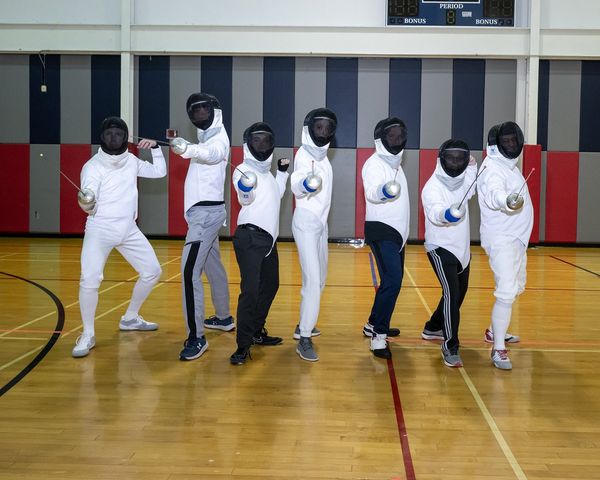The Fencing Club, a recently established club sport on campus, was formed in January 2022. Its current president, Luke Pettijohn, junior economics major, has been the president since January 2024 and was one of its founding members.
The club currently has one advisor, Jason Hardgrave, associate professor of history and interim assistant provost for Academic Affairs, and one coach, Tom Fuller.
“Fuller is with a fencing school that is from this area,” Pettijohn said. “He currently does competitions. He’s been fencing for about 30 years. So he knows everything.”
The club has several members and two groups, beginner and advanced.
“It varies how many students come to the meets,” Pettijohn said. “As far as the advanced, I want to say six to eight, maybe upwards to nine. We get there when it is more open at our meetings that are more beginner friendly rather than the advanced classes.”
The beginner practices are from 6-8 p.m. Thursdays in the Recreation, Fitness and Wellness Center basketball court. The advanced practices are from 6-8 p.m. Tuesdays in the same location.
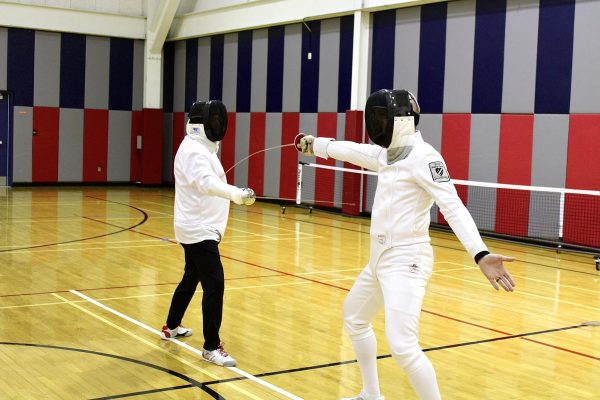
“Thursdays nights are where you can just show up, and you will be taught how to fence,” Pettijohn said. “The more often you show up, you get a wider skill set within fencing. Tuesday nights are for the advanced, and we go over more suitable, more advanced techniques and the other two weapons in fencing.”
Pettijohn said the club practices three types of fencing sports and weapons: foil, epée and saber.
“They’re three completely different sorts of target areas and holes,” he said. “With foil, the one we mainly use is the target area, which is the main part of the sport because you’re stabbing your opponent. The target area is waist to the neck, excluding the arms, so it’s only the torso and the neck. Épée is basically the dueling sword, the dueling sport.”
Pettijon explained how to duel with a saber.
“The entire body is the target, from head to the bottom of your shoe, from hand to other hand and in that there’s no right of way, so whoever stabs the person first gets the point,” he said. “If there’s a simultaneous, both people get the points. Saber is waist up excluding hands, and it’s the only sport where slashing is acceptable. It’s actually the main thing you do is slashing. You can stab, but slashing has been more common.”
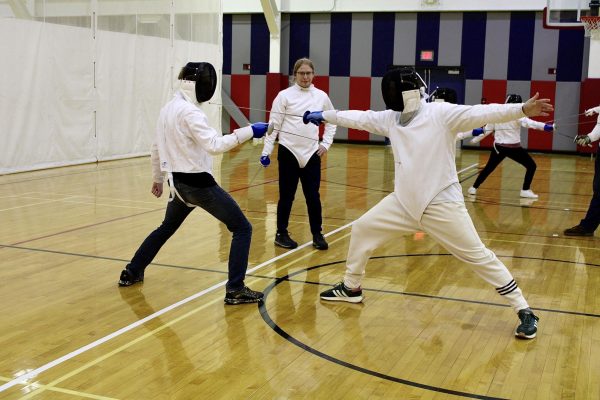
Pettijohn said fencing practice behave similarly to other sports.
“We start out stretching, getting the body warmed up for exercise because that’s what it is, a sport, as you would do normally with baseball or basketball, you stretch,” he said “Then we go over techniques, and we practice. Then we end off with bouting. We actually go in, fight each other, and have a lot of fun.”
If someone wants to participate in a fencing practice, they must sign a Recreation, Fitness and Wellness Center waiver. When they apply, protective gear is provided that fits to any size.
“We start with beginners by figuring out what size they are for the vests, the helmets and the gloves,” Pettijohn said. “We have gear that you can use, and most of everyone uses the gear provided by the club. The jackets, the helmets, the swords, the gloves, the lames, everything is provided. So when you show up, we’ll just gear you up and you can join us.”
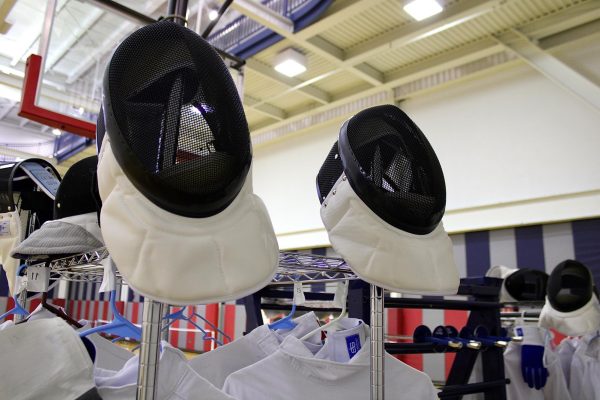
“There’s a strap that goes underneath the waist and to the backs for extra protection,” Pettijohn said. “The helmets go over the face. There’s an opening in the back, which is the reason why we cannot show the back of your head during a match or turnaround, it’s very unsafe.”
Pettijohn said safety is taken seriously by the Fencing Club.
“Fencing can be dangerous without regulations, safety measures and precautions,” he said. “You have to wear long pants and close-toed shoes. Underneath the vests, there’s what you call plastrons. They are kind of like a half jacket that has a sleeve going down your arm and part of it goes down your body. That sleeve is on your fencing hand. So if for whatever reason, a sword gets into a seam, it doesn’t go directly into your body.”
The Fencing Club has the opportunity to compete in a tournament for the first time at Indiana University March 23.
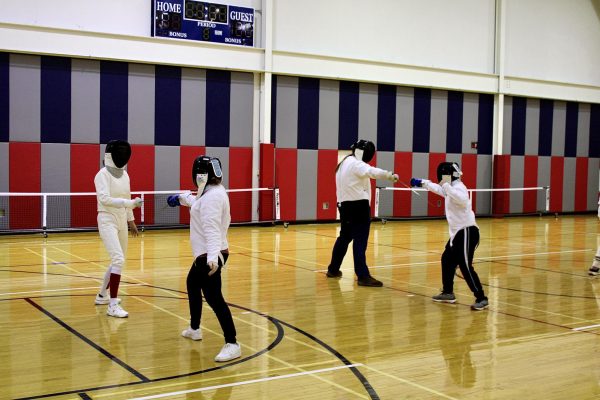
Hardgrave said this tournament is a great chance for the club to connect with more fencing groups.
“When you go on to compete, you’re going to compete against a variety of different people, and they’re basically the same age group as you,” he said. “Anyone can sign up to compete, not just schools, so you have some people independently going. When you compete, you will be chosen from a pool, and then you compete in that pool, and then you can advance to smaller pools until the winner is chosen. We’ll be going up there in the same group and doing all that stuff together and will have the same coaches.”
If you’re interested in trying out the fencing club, the Thursday practices are free to students who as long as they present a valid student ID at the Recreation, Fitness and Wellness Center.


